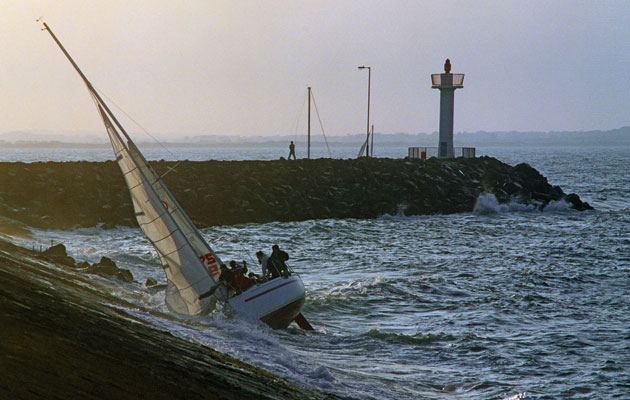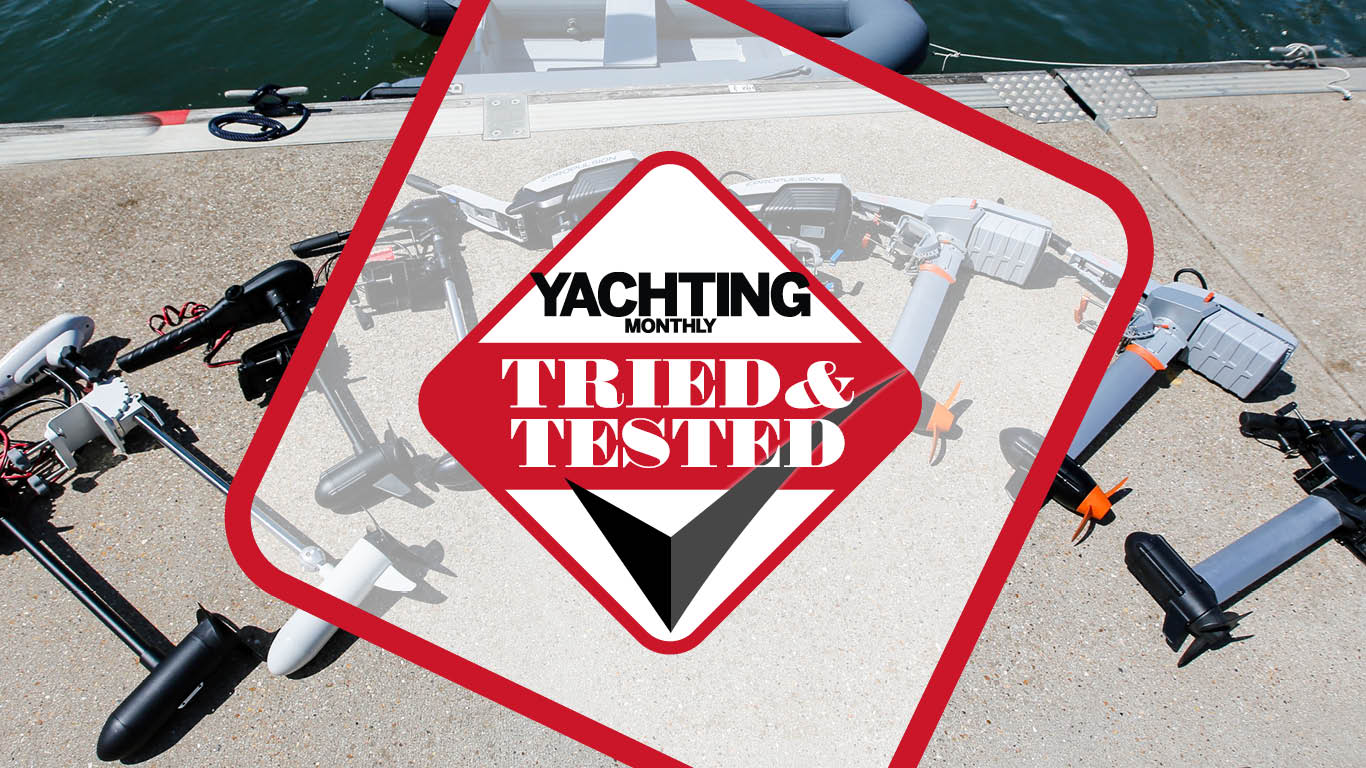Ken Endean reveals what you should look for, and what you should avoid, when investing in a new pair of binoculars
What makes a good pair of marine binoculars?
| I am told there has been a slump in demand for binoculars, possibly because boat owners are placing more faith in electronic systems such as radar and AIS rather than their own eyes. If that’s the case, then skippers relying on digital blips are doing themselves a disservice.
Binoculars may be less effective in poor visibility but most sailing is done in fairly clear air, when the optics become an integral part of the direct path between seascape, eyes and brain. The best way to become familiar with a cruising ground is to look at it! Binoculars have other valuable uses, such as when you discover a split pin or threaded nut lying loose on the deck. Did it fall from your pocket or from the mast? A decent pair of binoculars that can manage shorter focus will help you to check the rig quickly, and may even detect that the radar scanner is working loose. Seeing double  If this is the view of the Needles through your binoculars, you’ve certainly got a prism out of place However, I have a serious grouse about cheaper modern binoculars, in that many have inadequately secured prisms, producing double vision when those prisms are dislodged by a sharp impact. The prisms may be glued in place, rather than clamped, and so-called rubber armouring seems to make no difference. I have found this problem on my friends’ boats, charter boats, training boats and even in pairs of brand-new binoculars that were on sale in shop windows. If I were about to buy a pair, I would pay only slight attention to fancy lens coatings and gas fillings – but I’d really like to know how the prisms are fixed. They don’t make ’em like they used to  Ken bought this Soviet-made set almost 30 years ago. Despite rough treatment, they still give a single image That’s why I am hanging on to my own ancient pair of 7×35 bins. They were a hurried, low-cost purchase, made 30 years ago to replace a stolen set, and were undeniably a tacky import, with flimsy chrome trims on a hard metal casing. Even so, I have treated them cruelly, dropping them in the cockpit, swinging them against the coaming and letting them fall off the cabin table, yet the prisms still produce a single, coordinated image. The secret lies in the words ‘Made in USSR’. The factory producing instruments that could cope with mistreatment from Red Army conscripts, retained the same robust components for the export models that were tarted-up to attract capitalist hard currency. They are my Cold War bonus. What causes double vision?  Held in with spring clips and glue, it’s easy to see how a decent knock will dislodge the prisms in this cheap pair of binoculars When we cut up a new pair of cheap binoculars, to inspect the prism-clamping mechanism, the risk of displacement became obvious. The main mechanical clamp for each prism was a single strip of springy steel, clipped into two notches in the plastic case and bearing against one edge of the prism. Any sharp blow would induce very high deceleration in the components and hence pretty high forces upon the springy strip. And when you apply a high force to a spring, it bends. Some blobs of hard adhesive had been added to ‘lock’ the manufacturer’s adjustments to the prism settings, but these were incapable of resisting significant forces and at least one had cracked through. For my next new set… During YM’s 2013 test of new binoculars, all the models produced a brighter field of view than my historic set, because they all had larger, 50mm objective lenses. However, my eyes had grown accustomed to the old eyepieces and focussing characteristics, so I found some difficulties with the modern sets.  Find the right distance between your eyes and the lens. Here, Ken is resting the eyepieces on his eyebrows to avoid ‘blacking out’ The main problem was ‘blacking out’ at the edges of the view. This effect is caused by the observer’s eyes being too close to the eyepieces. To avoid the problem, the lens may need to be held slightly away from the eyes. This can sometimes be achieved by wedging the eyepieces on the bridge of the nose or against the eyebrows, but it’s easier if the binoculars are fitted with adjustable eyepiece cups. So, if I were now contemplating the purchase of a new pair of binoculars I would look for adjustable eye cups and try to obtain specification details indicating strong prism fixings. The industry perspective The binocular market is currently in a poor state due to an increase in cheap imports, explains Philip Monk of Monk Optics  All binoculars used to be handmade with precision by craftsmen using quality materials – a good set still is, and will be expensive In recent years there has been a marked change in binocular buying habits in the marine market. Ten years ago there was strong demand for high-quality German or Japanese marine binoculars, with or without compasses, but today cut-price binoculars have flooded the market. The price gap between budget and quality binoculars is so great that there is a general tendency to replace duff binoculars with another cheap set, rather than invest in high-quality ones. Another factor is the continual improvement of affordable radar, AIS and GPS navigation systems – even though binoculars can be a life-saver should batteries or electronic equipment fail. Why are binoculars so cheap now? Compared to binocular manufacturing 50 years ago, we now see much cheaper materials (such as plastic casings and acrylic lenses), fewer parts and cheaper labour – hence the lower price. Unfortunately, assembly skills are just as critical today as they were 50 years ago, but inexperienced workers and price pressures have produced binoculars that are generally of poor quality. Of the cheap imported marine binoculars, the most common failures are moisture ingress causing ‘fogging’ and binocular prisms out of alignment (double vision). Indeed I’ve known some to be out of alignment before they leave the factory due to poor quality control. Is anything better today?  With its aluminium body, rubber O-ring seals and properly clamped prisms, this set of binoculars will last a lifetime, and beyond There have been two major improvements in quality binocular manufacturing. Coatings on lenses and prisms are much improved, enabling up to 95% of the light to reach the eye for a brighter, more detailed image, whereas 60 years ago light transmission was about 60%. The other is the use of strong but lighter materials that enable the binocular to be lighter yet incredibly durable and tough. Better is best |
It’s the old story: you get what you pay for. The big difference between electronics and a good set of binoculars is that the binoculars will last a lifetime and will not be superseded three months later by a better performing product at half the price. A cheap set might not last a season.
10 classic pilotage mistakes in navigation…
…and how to avoid them. James Stevens reveals the classic pilotage mistakes and explains what you need to do to…
Best electric outboard motor: We put the market leaders to the test
The electric outboard motor has been around for many years, but they have either been too low powered or their…
The best multitool for boating: 10 tested
A multitool is a toolkit in your pocket for when you need it the most. The Yachting Monthly team put…







